Morressier’s Guide to Research Integrity
To download this guide as a pdf to share, click here (no form)
Let’s set the stage
Research integrity is the practice of conducting research in ways that promote trust and confidence in all aspects of science. This includes the whole research lifecycle, from hypothesis to experiment, all the way through to publication and the formation of the scientific record.
As headlines of scientific fraud and research community scandals go viral, the fight for research integrity has never been more critical.
We protect integrity throughout the entire research lifecycle, defending publishing programs against fraud with sophisticated content management solutions, structured around 3 core pillars:
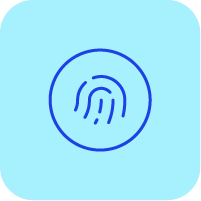
Verify - multi-source identity verification checks separate bad actors from future leaders and strengthen peer review and author communities.
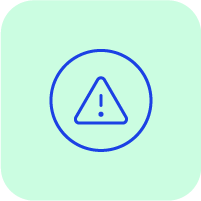
Prevent - industry-leading fraud detection systems alert publishers of potential infringements and defend reputations against retractions before they occur.

Protect - integrity solutions span all points on the research lifecycle, giving you room to scale and diversify your publishing outputs with confidence.
Morressier aims to restore trust in science by improving the way scientific research is published.
In this guide, we will review the current research misconduct landscape, the way different stakeholders approach research integrity, and most importantly, what are we going to do about it. Morressier’s strategic vision for research integrity will lead to the next evolution of the scientific publishing ecosystem.
Let’s discover how.
A welcome letter from Sami Benchekroun
 Welcome, scholarly publishing community, to Morressier’s Guide to Research Integrity.
Welcome, scholarly publishing community, to Morressier’s Guide to Research Integrity.
Transparency and integrity have always been a core part of our mission at Morressier.
We got our start revealing the hidden world of conference posters and presentations by digitizing this early part of the scientific record. One of the first things I learned, all those years ago, was how interconnected the world of scholarly communications truly is. You pull at one string to solve a problem, and it unravels to reveal additional pain points, dependencies, legacy solutions and workarounds.
Our early focus on conference research centered on bringing greater transparency and efficiency to the research lifecycle. That goal revealed further issues in the content management workflows both pre-conference and post-conference. These segments of the research lifecycle are traditionally not subject to the same rigorous reviews as journal articles. So not only were we limiting the impact of conference research by not digitizing and sharing it consistently, we were not protecting the security of our conferences’ reputations.
We kept pulling that thread, beginning with academic conferences, and it revealed more and more of the challenges of maintaining integrity across the research lifecycle.
So here we are. The legacy of our scientific publishing infrastructure is holding us back. We all want greater research integrity but feel trapped in a tangle of challenges:
- We struggle to scale: The current explosion of submitted content puts added stress on peer review workflows, which are limited by outdated technology and countless manual steps and checks.

- We have tunnel vision: Our hyperfixation on the journal article, instead of an interconnected web of scientific thought, increases pressure on authors and misses the opportunity to bring broader context to research.
My vision is a world where we give as much support and context to all stakeholders involved from the earliest outputs at a conference, to the manuscript that turns into the article, connected with rich metadata and supported by the best technology. Only this holistic view will ensure the highest level of research integrity. There is no point solution, no quick fix for research misconduct. Instead, I see a future for scholarly publishing that moves with agility, delivers integrity, and accelerates how science is shared.
Together we can protect science, separate the bad actors from common mistakes, and create a culture of trust.
Yours sincerely Sami
Breaking down research misconduct
Why are more and more research results becoming impossible to replicate? As plagiarism proliferates and takes on new, covert forms, are any ideas truly original these days? When it is easier and easier to fabricate data or manipulate images, how do we analyze effectively?
Let’s explore the dark underbelly of the research community and take a closer look at our enemies in this battle for truth.
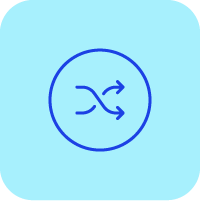
Data fabrication and falsification
Intentionally altering data to create results that do not exist in order to fit their hypothesis or desired outcome is data fabrication. Altering data throws a serious wrench in the works for future studies that rely on these results.
According to a recent research integrity survey conducted by Morressier, 38% of respondents said data fabrication was the most common type of research misconduct, followed by plagiarism.

Plagiarism
Scientists learn from one another’s observations, ideas, and mistakes, but there’s a fine line between inspiration and theft. Researchers incorporate another author’s work into their own without attributing credit where it’s due in plagiarism cases.

Authorship misconduct
When researchers include their names in studies that they did not contribute to or exclude co-authors’ names in order to get ahead, it leads to a mess of attribution. As egos and ambition collide, it is important to verify identities beyond a paper.

Salami slicing
Salami slicing involves dividing a single study or project into multiple smaller publications to boost the number of publications produced. Dividing a study in this way negatively impacts a readers’ ability to understand the research holistically.

Undisclosed conflicts of interest
When biases and personal objectives tilt the scales of scientific inquiry, it corrupts the value of the research. Scientists and study participants must disclose conflicts of interest for the sake of objectivity, but some are too small to be noticed easily.

Ethical/confidentiality violations
When individuals participate in a research study, it requires trust. Confidentiality violations harm their sense of security, trust in science, and privacy, while also damaging the reputation of the researchers, publishers, and institutions involved.

Paper mills
"Paper mills” are illegitimate platforms that gather fraudulent manuscripts, filling the market with work that lacks genuine research. Recently, Clarivate delisted 50+ journals for quality issues, with 19 journals removed due to paper mill activity.
As Jay Flynn, the EVP and General Manager of Wiley’s Research business describes in that article, “with low public trust in science, the integrity of research publishing has never been more important.”

Predatory journals/publishers
These publications often attract early-career researchers and those from marginalized backgrounds, charging them to submit in fraudulent journals with the promise of professional experience and advancement.
As Simon Linacre describes, we have to look at research integrity holistically, and at the driving forces behind fraud or predatory publishing. “Open access was a vital and necessary progression in scholarly communications, but the economic reality was that it exposed individuals to a market in place of organizations, which made it much easier to exploit for nefarious actors such as predatory publishers.”
As technology develops, so do new ways to perpetrate fraud and misconduct. How do we protect your journals?
The fight for research integrity today
Today’s strategies for upholding integrity are under immense strain as the volume of content striving for publication grows each year. For better integrity, we need these systems to work so much faster and smarter.

Peer review
Peer review is the bedrock of scientific publishing, a tried-and-true method for evaluating scholarly findings. Peer review builds trust within the publishing process, but bias, conflicts of interest, and lack of reviewer expertise or diligence are beginning to compromise research content quality and threaten the credibility of academic ideas.


Data management/transparency
To respond to the strained peer review system, many circumvent traditional publishing to share their ideas in scientific databases and preprint servers. This shift towards transparency holds promise, opening doors to broader accessibility, but we still need effective quality control measures.

Disclosures of affiliations/COIs
Conflicts of interest (COIs) are affiliations between scholars, funding agencies, or research participants that may affect the reliability of their research or create bias. The academic community places trust in individuals to disclose COIs to relevant parties.

Journal guidelines
Journal guidelines are an essential part of maintaining integrity within the academic ecosystem. But despite the guidelines and ethical standards that journals outline, challenges persist. Inconsistent application of guidelines, lack of transparency in editorial processes, and other issues can still create bottlenecks to preserving integrity.
“The deeper we delve into the complexities of scholarly publishing,
the clearer it becomes how technical limitations, human error and malicious actors introduce risk at every point along the path to publication. The work done behind the scenes by authors, editors, reviewers, integrity investigators and the many supporting players to protect the scientific record is, frankly, nothing short of heroic. This has only strengthened our resolve to deliver better tools that make their vital work more efficient, effective and rewarding.”
-Barry Prendergast, Product Designer, Morressier
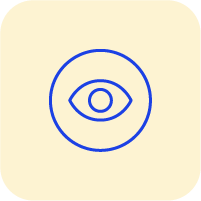
Industry organizations like Retraction Watch
Independent bodies, like Retraction Watch, are superheroes of research integrity, armed with a database that tracks article retractions to hold the academic community accountable and promote responsible research. These websites are remarkable tools for raising awareness about fraud and errors in research.
While the status quo has admirably held the worst of research misconduct at bay, there is much more we need to do. Progress we will only achieve collaboratively.
The research integrity ecosystem
 Each stakeholder within the academic publishing community plays a distinct part in promoting research integrity. It is only through the collective power of all of these groups working together that we’ll succeed. We need to review the landscape in order to understand where we share goals and where our priorities differ.
Each stakeholder within the academic publishing community plays a distinct part in promoting research integrity. It is only through the collective power of all of these groups working together that we’ll succeed. We need to review the landscape in order to understand where we share goals and where our priorities differ.

Publishers
Societies, associations, and publishers hold the power to shape the future of research integrity. Publishers promote integrity by creating ethical guidelines, ensuring rigorous peer review processes, and facilitating transparent and reliable dissemination of research. But, we can’t allow publishing processes to stagnate. Publishers should be constantly improving, evolving, and strengthening these practices and tools to ensure better integrity, even in the face of pressures to publish more research, faster.

Authors
In a recent blog, we posed a critical question: “Are authors responsible for research integrity?” Undoubtedly, authors bear the weighty responsibility of publishing accurate results and following the ethical guidelines and policies that are established by their community. They are under considerable pressure to publish in the top journals year after year, so how can we expect scholars to take integrity into their own hands without a supportive environment and efficient infrastructure?


Peer reviewers and editors
As the gatekeepers of academic research, reviewers and editors hold the power when it comes to deciding what information makes its way into the scholarly record. These individuals are responsible for identifying errors, flaws, biases, evidence of misconduct, and more. But with the collective time globally spent on peer review in 2020 reaching an astonishing 15,000 years, and with the number of academics willing and able to serve as reviewers becoming more and more scarce, the system is becoming slow and strained, with sloppy research slipping through the cracks.

Industry watchdogs
Independent organizations and initiatives safeguard research integrity by uncovering fraud and retractions, and raising awareness about misconduct. These “watchdog” groups, like Retraction Watch, are responsible for holding the academic community accountable and providing critical coverage of missteps so that we can identify areas for improvement and growth.

Technology providers
Technology companies provide the infrastructure that drives the scholarly publishing industry forward. These providers can create platforms that work to facilitate data management, transparency, and reproducibility. Unlocking the power of technology will introduce new tools to the publishing market that add an extra layer of integrity to processes like peer review, detecting these issues earlier than ever before and averting future challenges.

The public and the general media
As consumers, the public have the power to demand transparency and integrity, and ensure that the information they engage with is accurate. But both traditional and social media can amplify research integrity issues at a scale that is unprecedented for scholarly publishing. While retractions are a critically important piece of preserving the scientific record, when presented in the general media they can be very damaging to reputations.
 In 2022, only 29% of U.S. adults said they have a great deal of confidence in medical scientists to act in the best interests of the public. Our community must recognize the urgency of the integrity crisis and the decline of public trust in research.
In 2022, only 29% of U.S. adults said they have a great deal of confidence in medical scientists to act in the best interests of the public. Our community must recognize the urgency of the integrity crisis and the decline of public trust in research.
Ultimately, we are left pondering a vital question: how can research make the impact it needs when the world’s learners cannot trust it?
For so many both inside and outside the research community, integrity is of critical importance. We need solutions that meet the needs of a diverse group of stakeholders.
The tough questions
Answering the tough questions: Why integrity? And so what?
We’ve reviewed the research integrity landscape, the stakeholders, and the most common threats. Let’s turn our attention now to strategy, and answer the questions:
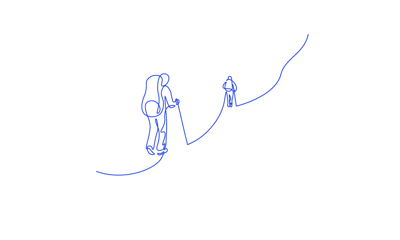 What happens if we fail? What are the impacts if we don’t put integrity front and center for every aspect of the research lifecycle?
What happens if we fail? What are the impacts if we don’t put integrity front and center for every aspect of the research lifecycle?What happens if we succeed? What will be the outcome of a strategic series of research integrity changes?
Throughout this guide, we’ve been talking about how interconnected the research industry, and especially publishing, are. Each change influences a cascade of other changes, some anticipated and some not. This cascade is where the fear sets in. Even if today’s system isn’t working perfectly, if we try and start over what are we risking? What are the odds we make it worse?
In the context of research integrity, the most consequential thing at risk is trust. Without trust, science has no hope of impact. Ignored, dismissed, retracted at such a high degree that the entire community feels the loss. This is unacceptable in today’s society with vast, complex problems that urgently need the latest discoveries from every discipline to help our communities, and our planet, survive.
 If the risk is too great, then what about the reward? Without question, improving research integrity warrants the risk. A focus on research integrity, and the clear communication of that commitment, will improve the reputation of science and scientists everywhere. Trust is capital when it comes to having seats at the table to create evidence-based solutions to the world’s problems.
If the risk is too great, then what about the reward? Without question, improving research integrity warrants the risk. A focus on research integrity, and the clear communication of that commitment, will improve the reputation of science and scientists everywhere. Trust is capital when it comes to having seats at the table to create evidence-based solutions to the world’s problems.
Another tough question: How?
It's easy to imagine a future, or indeed, multiple futures that center research integrity and see a more impactful and efficient research infrastructure. But how do we get from here to there?
 Technology: To put it simply: we cannot move fast enough, or far enough without harnessing the power of today’s technology. Agile development makes evolution and constant improvement possible, and also supports easy and streamlined migrations and integrations.It is time to let technology organizers be a central stakeholder in the future of the scholarly publishing industry.
Technology: To put it simply: we cannot move fast enough, or far enough without harnessing the power of today’s technology. Agile development makes evolution and constant improvement possible, and also supports easy and streamlined migrations and integrations.It is time to let technology organizers be a central stakeholder in the future of the scholarly publishing industry.  Collaboration: Every stakeholder has a role to play identifying for prioritizing this industry’s research integrity activity. Publishers need to adopt proactive and transparent policies, technology organizations need to integrate to offer comprehensive programs to the industry. Everyone needs to take accountability for their part to play, and speak out for the tools they need.
Collaboration: Every stakeholder has a role to play identifying for prioritizing this industry’s research integrity activity. Publishers need to adopt proactive and transparent policies, technology organizations need to integrate to offer comprehensive programs to the industry. Everyone needs to take accountability for their part to play, and speak out for the tools they need. Empathy: If we don’t take the time to heal the root causes of research misconduct, then we will never solve research misconduct. Authors in the “publish or perish” culture will always be in a publication race. While there are bad actors, research integrity often comes down to a system that places institutional pressure on authors’ ability to publish frequently in a competitive environment.
Empathy: If we don’t take the time to heal the root causes of research misconduct, then we will never solve research misconduct. Authors in the “publish or perish” culture will always be in a publication race. While there are bad actors, research integrity often comes down to a system that places institutional pressure on authors’ ability to publish frequently in a competitive environment.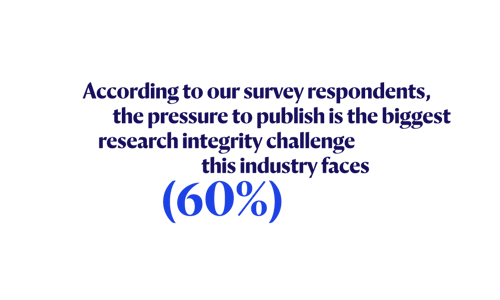
"I can’t overstate how important research integrity is to the future of
science. If we can look at the big picture from multiple perspectives and every stage of the research lifecycle, then we have the opportunity to transform this industry to be more future-focused, secure, and efficient."
-Othman Altalib, Chief Growth Officer, Morressier
These changes are not easy - they require systemic commitments to change across multiple stakeholders. But coming together with empathy, supported by technology, to collaborate on a cross-stakeholder solution will have profound impact.
The vision for journal security
It's critically important that your journals, and your entire publishing program, are secure against research integrity threats. You need to be able to review all content, for all publications, through a single source. True journal security means the ability to identify trends in research misconduct that you can address at their root causes, with a higher degree of analysis than ever before.

Proactive - We cannot approach research integrity as a point solution. Instead, we need an entire ecosystem of integrity that improves quality from the earliest stages of the research lifecycle. A proactive vision for journal security means integrity checks are run at multiple points of the publishing process, from pre-conference content management, to proceedings, to during journal peer review. Imagine how powerful your misconduct-fighting abilities will be when all those data lives in a single dashboard, with comprehensive views of your full portfolio.

Integrated - We need the technology we develop to not scramble to catch up with new and emerging types of fraud. In order to stay ahead of the curve, we need to bring together all the best solutions in the scholarly publishing tech landscape under a single dashboard. Integrations drive our technology strategy, because research integrity is such a vast issue with many types of fraud or misconduct to address. If we built with a linear and exclusively proprietary product roadmap, we risk falling behind the bad actors and technology that enables fraud in the first place.


Diversified - As we discussed earlier, part of the underlying pressure that causes fraud and misconduct is the extreme pressure to publish articles in top ranked journals. To improve research integrity in the long term, this hyperfixation on one research object needs to change. A foundation of integrity for conference presentations, abstracts, posters, and proceedings, as well as more flexible workflows that allow for a diversity of research objects, will naturally relieve the pressure on journal articles and by extension the driving cause of research misconduct.
“Integration between different technology providers allows us to use best-in-class solutions for every type of research integrity, muchfaster than any one organization could produce on their own. This spirit of collaboration will drive scholarly publishing forward, faster.” - Dan Gebler, VP of Product & Design, Morressier

Connected - For research integrity to thrive, it requires robust identity and affiliation verification. The disambiguation of this data is complex, but it will help you separate bad actors from future leaders (and peer reviewers) and ensure highly ethical publishing workflows. To fully eliminate conflicts of interest and ethical issues during the peer review process, you need the data. With our journal security strategy, you will have a historic record of that data dating back to the earliest conference poster or abstract, allowing you to predict trends, identify emerging leaders, and confidently avoid ethical issues during peer review.
 Our vision for journal security gives you added layers of protection, while easing the administrative burden on peer reviewers and editors. No longer will editorial teams need to fear falsified data, or citation manipulation. With collaborative partnerships between Morressier, publishers, and societies we can ensure trustworth science is shared with the world - faster.
Our vision for journal security gives you added layers of protection, while easing the administrative burden on peer reviewers and editors. No longer will editorial teams need to fear falsified data, or citation manipulation. With collaborative partnerships between Morressier, publishers, and societies we can ensure trustworth science is shared with the world - faster.
Morressier's Integrity Manager
Today’s research ecosystem must balance the need to grow against new threats to journal security. Research misconduct can breach any stage of the publication lifecycle. That’s why it’s vital to have options to help mitigate the risk of retractions.

“We know how complex a migration process can be, so we’ve built our Integrity Manager with the necessary flexibility that publishers can fit to their existing workflows, or within their existing systems. We want to give customers the option to improve integrity immediately, without requiring significant changes to their processes.”
- Madalina Pop, Product Manager, Morressier
With our Integrity Manager, whether you use our workflows or our standalone integrity dashboard, you’ll see improvements to efficiency, quality, and sustainability for your publishing program.
 Portfolio trust: ensure confidence in all publications by analyzing emerging threats to develop integrity policies and thresholds.
Portfolio trust: ensure confidence in all publications by analyzing emerging threats to develop integrity policies and thresholds.- Future-proofed platform: with new integrations, and constant development for emerging threats, your research integrity solution is never out of date
- Higher quality published output: comprehensive research integrity checks lead to fewer retractions and less risk to your portfolio.
- Faster time to publication: automating manual steps during peer review and adding integrity checks saves time for reviewers and editorial teams.
- Strategic technology partnership: a single dashboard combining the best tech in the industry helps avoid managing multiple vendor relationships.
Key features
Every month, we’re adding to our rich list of integrity checks, giving you a comprehensive protection program that will never be out of date.
 Automatic pre-flight checks: automatically confirm whether a manuscript adheres to your publishing templates. Identify incomplete submissions, such as missing author information (email, affiliation, etc.), missing ethics statements, missing keywords, and more.
Automatic pre-flight checks: automatically confirm whether a manuscript adheres to your publishing templates. Identify incomplete submissions, such as missing author information (email, affiliation, etc.), missing ethics statements, missing keywords, and more.  Automatic author ID verification: confirm authors and co-author identities with a multi-step automatic verification process, using Ringgold, ORCiD and other industry standards.
Automatic author ID verification: confirm authors and co-author identities with a multi-step automatic verification process, using Ringgold, ORCiD and other industry standards. Automatic assignment of DOIs: discover, share, and track research throughout the lifecycle with automatic assignment of your DOIs to early-stage research.
Automatic assignment of DOIs: discover, share, and track research throughout the lifecycle with automatic assignment of your DOIs to early-stage research. Detect fraud and plagiarism: submissions to the Morressier platform are run through AI tools and our proprietary data miming algorithms.
Detect fraud and plagiarism: submissions to the Morressier platform are run through AI tools and our proprietary data miming algorithms.
 Detect citation manipulation: identify articles that cite the same author’s research multiple times, allowing the option to exclude these articles from publication.
Detect citation manipulation: identify articles that cite the same author’s research multiple times, allowing the option to exclude these articles from publication. Detect tortured phrasing: identify this pervasive tactic of plagiarism that replaces common phrases with synonyms.
Detect tortured phrasing: identify this pervasive tactic of plagiarism that replaces common phrases with synonyms. Detect salami publishing: identify fraud attempts to “cut up” content that would normally be in one paper and instead spread over multiple papers, but without necessarily having overlap between the papers.
Detect salami publishing: identify fraud attempts to “cut up” content that would normally be in one paper and instead spread over multiple papers, but without necessarily having overlap between the papers. Flag AI generated papers: automatically scan, identify, and flag papers containing AI generated text.
Flag AI generated papers: automatically scan, identify, and flag papers containing AI generated text.  Flag papers citing retracted content: identify authors citing a retracted publication, this may point to problems with the literature research behind their paper or be an indication of being associated with the fraudulent authors of the cited publication.
Flag papers citing retracted content: identify authors citing a retracted publication, this may point to problems with the literature research behind their paper or be an indication of being associated with the fraudulent authors of the cited publication.
Morressier restores trust in science by increasing the quality of published content, reducing the risk of retractions, improving the efficiency of the publishing process, and enhancing the overall publishing experience.
Over to you
We hope you’re inspired by the potential and possibilities of a research integrity-rich future for scholarly publishing. There are a range of complex challenges, pressures, and pain points at play that we seek to solve with our approach to technology development.  Our team would love to talk to you. This work cannot be done without collaboration and partnership, and we’d like to hear your ideas, show you our Integrity Manager, and understand what keeps you up at night when safeguarding the security of your publishing program.
Our team would love to talk to you. This work cannot be done without collaboration and partnership, and we’d like to hear your ideas, show you our Integrity Manager, and understand what keeps you up at night when safeguarding the security of your publishing program.
We’ll leave you with a quote from Outsell in their recent STM report: “The Morressier offering is designed to support diverse disciplines and types of content, from conferences and posters to books and journals. With this move, Morressier has established itself as a market-leading, tech-centric thought leader in this sector, with the capacity for leading in research integrity solutions for years to come.”
To download this guide as a pdf to share, download the eBook (no form)